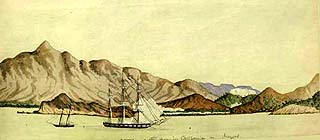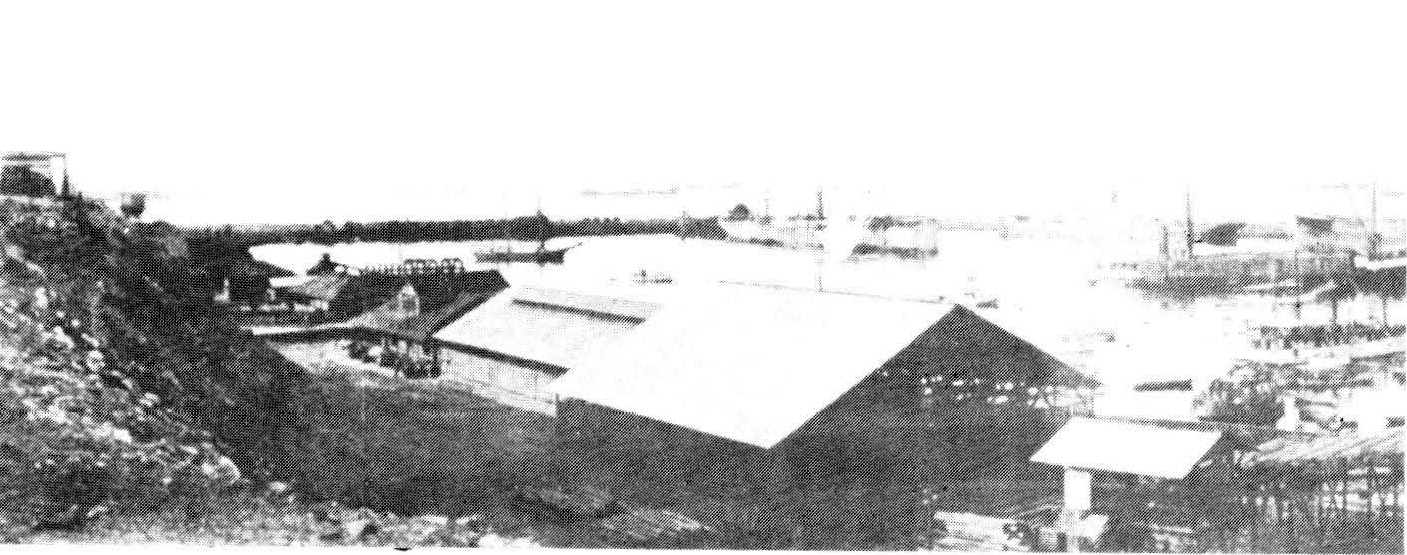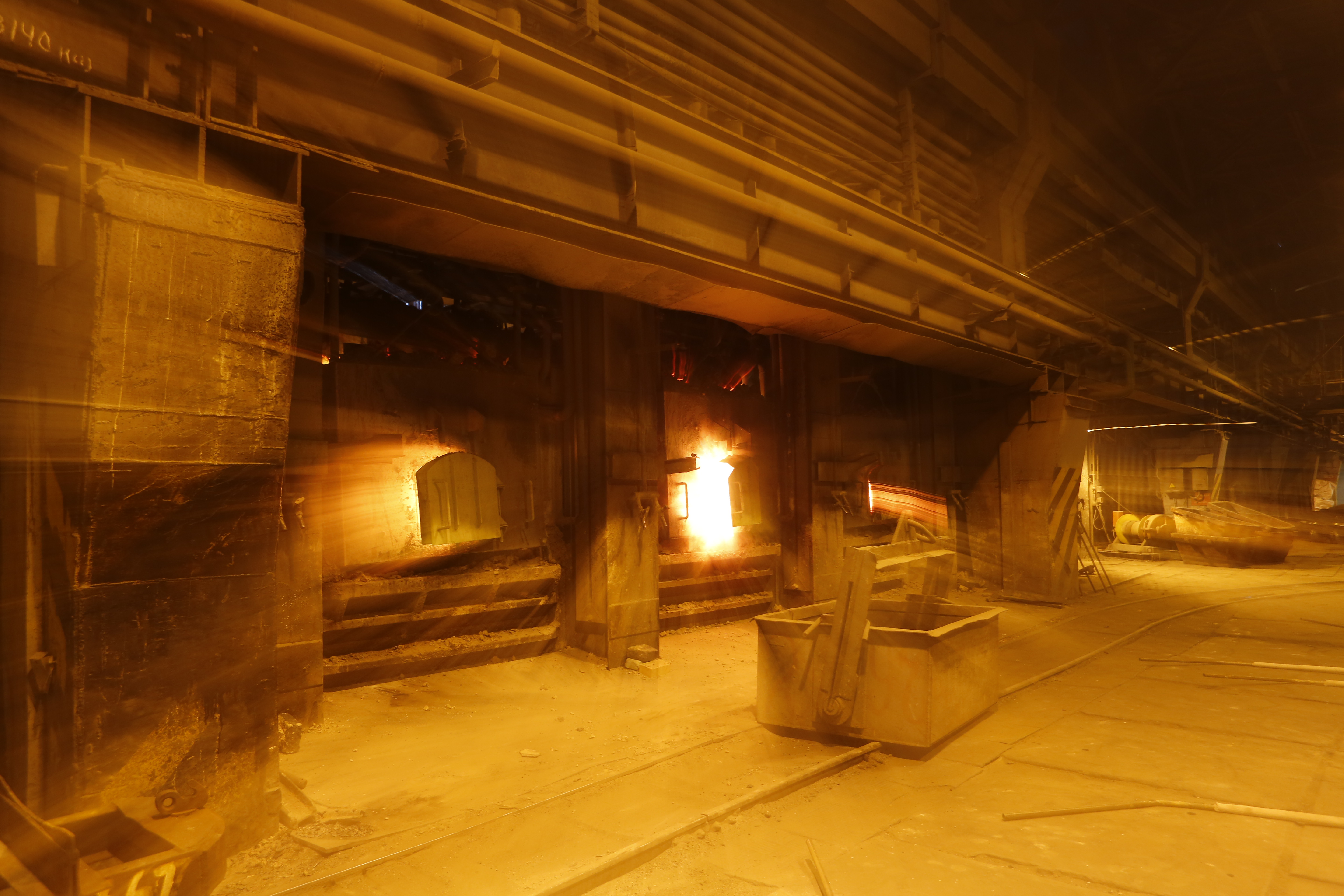|
Santa Rosalía, Baja California Sur
Santa Rosalía is a city and municipal seat of Mulegé Municipality, in Baja California Sur, situated along the Gulf of California. Located on the east coast of the Baja Peninsula, the town had a population of 14,160 inhabitants in 2015. The city was founded as a company town by the French Compagnie du Boleo in 1884, which established the local copper mines. Today the city is a popular tourist destination. History The town was named after Saint Rosalia, although the mission is not located by the town, but is in original location Mulegé, about south. Santa Rosalía boasts French influence, particularly in its architecture. The French Compagnie du Boleo founded the town in 1884 and exploited copper mines there until they closed in 1954. They built houses and installed the metallic Iglesia de Santa Bárbara. Unlike many other mining sites, the industrial facilities which are located in the very middle of the town, were never dismantled. Of particular interest are the r ... [...More Info...] [...Related Items...] OR: [Wikipedia] [Google] [Baidu] |
Baja California Sur
Baja California Sur (; 'South Lower California'), officially the Free and Sovereign State of Baja California Sur ( es, Estado Libre y Soberano de Baja California Sur), is the least populated state and the 31st admitted state of the 32 federal entities which comprise the 31 States of Mexico. It is also the ninth-largest Mexican state in terms of area. Before becoming a state on 8 October 1974, the area was known as the ''El Territorio Sur de Baja California'' ("South Territory of Lower California"). It has an area of , or 3.57% of the land mass of Mexico, and occupies the southern half of the Baja California Peninsula, south of the 28th parallel, plus the uninhabited Rocas Alijos in the Pacific Ocean. It is bordered to the north by the state of Baja California, to the west by the Pacific Ocean, and to the east by the Gulf of California. The state has maritime borders with Sonora and Sinaloa to the east, across the Gulf of California. The state is home to the tourist resorts ... [...More Info...] [...Related Items...] OR: [Wikipedia] [Google] [Baidu] |
Mulegé
Mulegé is a city in Mulegé Municipality, Baja California Sur, situated on the Gulf of California. Located on the Gulf of California, the population was 3,821 according to the Mexican census of 2010. History Indigenous peoples had lived in this area for thousands of years due to the abundance of water in the river valley. Extensive ancient cave paintings can be found in the nearby Sierra de Guadalupe mountains. In 1702, Jesuit Father Juan Maria de Salvatierra identified the valley of today's Mulegé as a place for a mission to the Indians. It was not until 1754 that Father Francisco Escalante started the construction of the mission, called Misión Santa Rosalía de Mulegé. Years later, many other Jesuit fathers came into today's area of Mulegé to bring the Catholic faith and convert the natives to Catholicism. The official name of the town is "Heroica Mulegé." This title is based on incidents during the Mexican-American War of 1846–1848. The Americans tried to occupy l ... [...More Info...] [...Related Items...] OR: [Wikipedia] [Google] [Baidu] |
Guaymas
Guaymas () is a city in Guaymas Municipality, in the southwest part of the state of Sonora, in northwestern Mexico. The city is south of the state capital of Hermosillo, and from the U.S. border. The municipality is located on the Gulf of California and the western edge of the Sonoran Desert and has a hot, dry climate and of beaches. The municipality's formal name is Guaymas de Zaragoza and the city's formal name is the Heroica Ciudad de Guaymas. The city proper is mostly an industrial port and is the principal port for the state of Sonora. The city has a well-attended annual carnival, which has been held since 1888. Nearby, San Carlos and its beaches are major tourist attractions. History Before the arrival of the Europeans, the bay of Guaymas was dominated by the Guaymas, Seri and Yaqui tribes. In 1539, two Spanish ships, the ''Santa Águeda'' and the ''Trinidad'', arrived in Guaymas Bay. They were commanded by Francisco de Ulloa, who called the area "the port of ports." So ... [...More Info...] [...Related Items...] OR: [Wikipedia] [Google] [Baidu] |
Santa Rosalía, Baja California Sur (21048024541)
Santa Rosalía is a city and municipal seat of Mulegé Municipality, in Baja California Sur, situated along the Gulf of California. Located on the east coast of the Baja Peninsula, the town had a population of 14,160 inhabitants in 2015. The city was founded as a company town by the French Compagnie du Boleo in 1884, which established the local copper mines. Today the city is a popular tourist destination. History The town was named after Saint Rosalia, although the mission is not located by the town, but is in original location Mulegé, about south. Santa Rosalía boasts French influence, particularly in its architecture. The French Compagnie du Boleo founded the town in 1884 and exploited copper mines there until they closed in 1954. They built houses and installed the metallic Iglesia de Santa Bárbara. Unlike many other mining sites, the industrial facilities which are located in the very middle of the town, were never dismantled. Of particular interest are the r ... [...More Info...] [...Related Items...] OR: [Wikipedia] [Google] [Baidu] |
Manganese
Manganese is a chemical element with the symbol Mn and atomic number 25. It is a hard, brittle, silvery metal, often found in minerals in combination with iron. Manganese is a transition metal with a multifaceted array of industrial alloy uses, particularly in stainless steels. It improves strength, workability, and resistance to wear. Manganese oxide is used as an oxidising agent; as a rubber additive; and in glass making, fertilisers, and ceramics. Manganese sulfate can be used as a fungicide. Manganese is also an essential human dietary element, important in macronutrient metabolism, bone formation, and free radical defense systems. It is a critical component in dozens of proteins and enzymes. It is found mostly in the bones, but also the liver, kidneys, and brain. In the human brain, the manganese is bound to manganese metalloproteins, most notably glutamine synthetase in astrocytes. Manganese was first isolated in 1774. It is familiar in the laboratory in the form of the ... [...More Info...] [...Related Items...] OR: [Wikipedia] [Google] [Baidu] |
Manto Ore Deposit
A polymetallic replacement deposit, also known as carbonate replacement deposit or high-temperature carbonate-hosted Ag-Pb-Zn deposit,Megaw, P.K.M., Ruiz, J., and Titley, S.R., 1988, High-Temperature, Carbonate-Hosted Ag-Pb-Zn(Cu) Deposits of Northern Mexico: Economic Geology, v. 83, pp.1856-1885 is an orebody of metallic minerals formed by the replacement of sedimentary, usually carbonate rock, by metal-bearing solutions in the vicinity of igneous intrusions. When the ore forms a blanketlike body along the bedding plane of the rock, it is commonly called a manto ore deposit. Other ore geometries are chimneys and veins. Polymetallic replacements/mantos are often stratiform wall-rock replacement orebodies distal to porphyry copper deposits, or porphyry molybdenum deposits.Ray, G., Webster, I., Megaw, P., McGlasson, J., and Glover, K., 2001, The Lustdust Property in Central British Columbia: A Polymetallic Zoned Porphyry-Skarn-Manto-Vein System: British Columbia Geological Survey Ge ... [...More Info...] [...Related Items...] OR: [Wikipedia] [Google] [Baidu] |
Zinc
Zinc is a chemical element with the symbol Zn and atomic number 30. Zinc is a slightly brittle metal at room temperature and has a shiny-greyish appearance when oxidation is removed. It is the first element in group 12 (IIB) of the periodic table. In some respects, zinc is chemically similar to magnesium: both elements exhibit only one normal oxidation state (+2), and the Zn2+ and Mg2+ ions are of similar size.The elements are from different metal groups. See periodic table. Zinc is the 24th most abundant element in Earth's crust and has five stable isotopes. The most common zinc ore is sphalerite (zinc blende), a zinc sulfide mineral. The largest workable lodes are in Australia, Asia, and the United States. Zinc is refined by froth flotation of the ore, roasting, and final extraction using electricity ( electrowinning). Zinc is an essential trace element for humans, animals, plants and for microorganisms and is necessary for prenatal and postnatal development. It ... [...More Info...] [...Related Items...] OR: [Wikipedia] [Google] [Baidu] |
Cobalt
Cobalt is a chemical element with the symbol Co and atomic number 27. As with nickel, cobalt is found in the Earth's crust only in a chemically combined form, save for small deposits found in alloys of natural meteoric iron. The free element, produced by reductive smelting, is a hard, lustrous, silver-gray metal. Cobalt-based blue pigments ( cobalt blue) have been used since ancient times for jewelry and paints, and to impart a distinctive blue tint to glass, but the color was for a long time thought to be due to the known metal bismuth. Miners had long used the name ''kobold ore'' (German for ''goblin ore'') for some of the blue-pigment-producing minerals; they were so named because they were poor in known metals, and gave poisonous arsenic-containing fumes when smelted. In 1735, such ores were found to be reducible to a new metal (the first discovered since ancient times), and this was ultimately named for the ''kobold''. Today, some cobalt is produced specifically from one of ... [...More Info...] [...Related Items...] OR: [Wikipedia] [Google] [Baidu] |
El Boleo
El Boleo is a copper-cobalt-zinc-manganese deposit located adjacent to the port city of Santa Rosalía, Baja California Sur in Mexico. It includes a historic open pit copper mine, as well as underground workings. Mining began in the 1860s, and continued, off and on, until the 1980s. The property is currently under development by a consortium of Korean companies led by Korea Resources Corporation. Preliminary underground mining began in 2012. The $1.75 Billion project is scheduled for completion in 2013. History Early history The discovery of the copper ore in the region is historically credited to a rancher named José Rosas Villavicencio in 1868. Minor mining activities were carried out on site by Mexican and German operators until 1885. But the small scale of the operation and the desolate location made the enterprise only marginally economic. Compagnie du Boleo El Boleo was first operated, on a large commercial scale, in 1885 by the French company Compagnie du Boleo whic ... [...More Info...] [...Related Items...] OR: [Wikipedia] [Google] [Baidu] |
Locomotive
A locomotive or engine is a rail transport vehicle that provides the Power (physics), motive power for a train. If a locomotive is capable of carrying a payload, it is usually rather referred to as a multiple unit, Motor coach (rail), motor coach, railcar or power car; the use of these self-propelled vehicles is increasingly common for passenger trains, but rare for freight (see CargoSprinter). Traditionally, locomotives pulled trains from the front. However, Push-pull train, push-pull operation has become common, where the train may have a locomotive (or locomotives) at the front, at the rear, or at each end. Most recently railroads have begun adopting DPU or distributed power. The front may have one or two locomotives followed by a mid-train locomotive that is controlled remotely from the lead unit. __TOC__ Etymology The word ''locomotive'' originates from the Latin language, Latin 'from a place', Ablative case, ablative of 'place', and the Medieval Latin 'causing mot ... [...More Info...] [...Related Items...] OR: [Wikipedia] [Google] [Baidu] |
Metallurgical Converter
Converting is a type of metallurgical smelting that includes several processes; the most commercially important form is the treatment of molten metal sulfides to produce crude metal and slag, as in the case of copper and nickel converting. A now-uncommon form is batch treatment of pig iron to produce steel by the Bessemer process. The vessel used was called the ''Bessemer converter''. Modern steel mills use basic oxygen process converters. Equipment The converting process occurs in a ''converter''. Two kinds of converters are widely used: horizontal and vertical. Horizontal (which are an improvement of the ) prevail in the metallurgy of non ferrous metals. Such a converter is a horizontal barrel lined with refractory material inside. A hood for the purpose of the loading/unloading operations is located on the upper side of the converter. Two belts of tuyeres come along the axis on either sides of the converter. Molten sulfide material, referred to as matte, is poured throug ... [...More Info...] [...Related Items...] OR: [Wikipedia] [Google] [Baidu] |
Reverberatory Furnace
A reverberatory furnace is a metallurgical or process furnace that isolates the material being processed from contact with the fuel, but not from contact with combustion gases. The term ''reverberation'' is used here in a generic sense of ''rebounding'' or '' reflecting'', not in the acoustic sense of ''echoing''. Operation Chemistry determines the optimum relationship between the fuel and the material, among other variables. The reverberatory furnace can be contrasted on the one hand with the blast furnace, in which fuel and material are mixed in a single chamber, and, on the other hand, with crucible, muffling, or retort furnaces, in which the subject material is isolated from the fuel and all of the products of combustion including gases and flying ash. There are, however, a great many furnace designs, and the terminology of metallurgy has not been very consistently defined, so it is difficult to categorically contradict other views. Applications and comparison with b ... [...More Info...] [...Related Items...] OR: [Wikipedia] [Google] [Baidu] |
.jpg)






